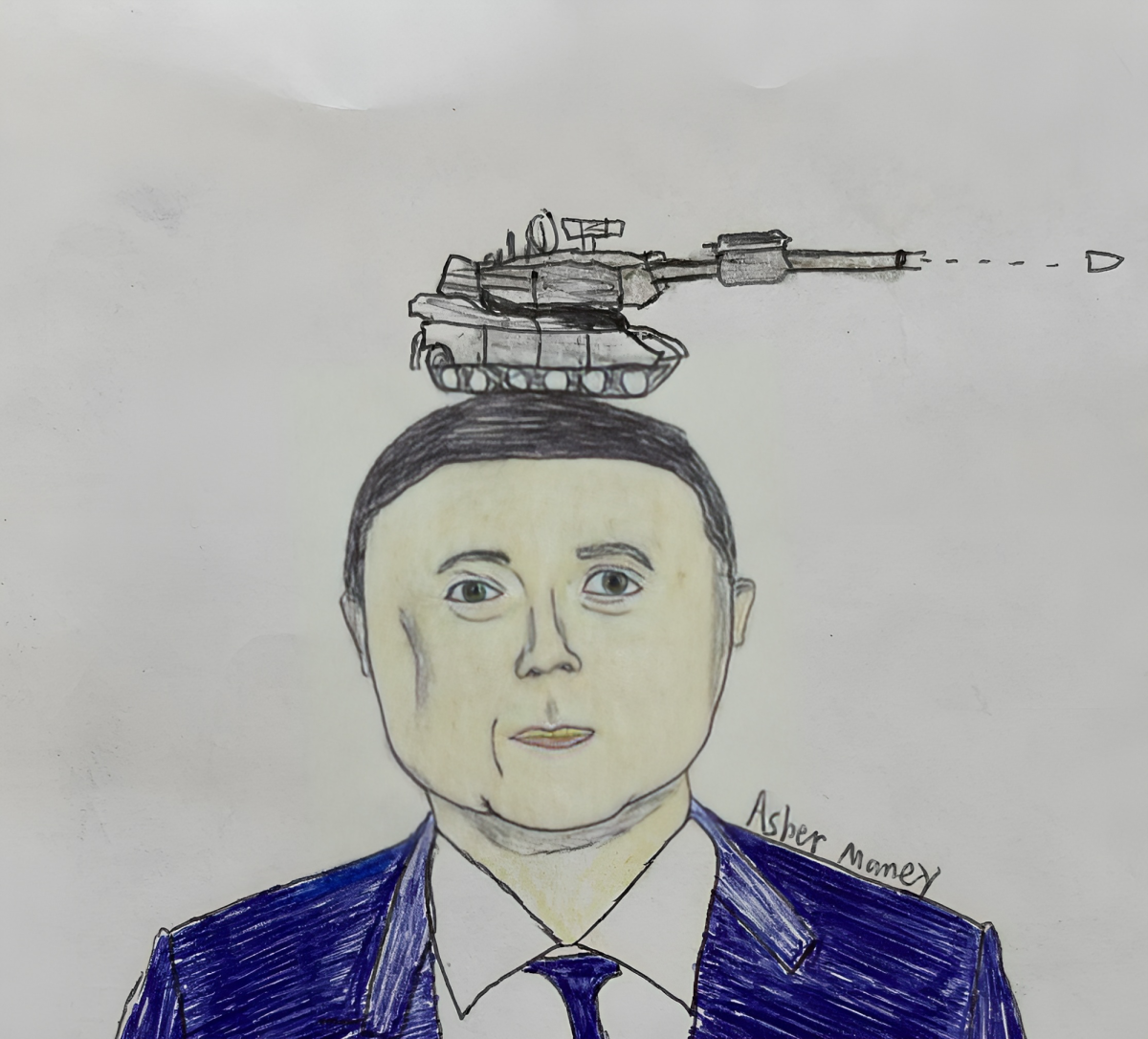On September 21st, Ukrainian President Volodymyr Zelensky met with U.S. President Joe Biden at The White House. The purpose of Zelensky’s visit was to ensure that Biden would follow up on his promise to supply Ukraine with billions of dollars in military support. It was a “You still got my back, right?” kind of visit.
Congress is expected to assist Joe in giving Ukraine the pledged Abrams Tanks and 24 billion dollars. Lately, Ukraine has been relying heavily on outside support. It almost seems that they’re starting to depend completely on other countries for resources. During an interview with Biden, Zelensky even went as far as to say, “If we don’t get the aid, we will lose the war”.
Many Americans, specifically right-wing individuals, are very against the idea of forking over more money to the foreign war. These people feel as though America has already given too much for a war that seems like it will end badly.
America has funded Ukraine with over $75 billion. A lot of U.S. citizens are wondering where all this money came from and how it can be willingly given away. Of course, the answer is that it’s mostly tax money. Those who don’t agree with how the money is being spent are beginning to doubt how well the government is being run. They argue that the money should stay within the U.S.’s borders and go toward something more useful instead of being exported overseas.
The biggest financial contributor to the Ukraine-Russia war is the U.S., and by a very large percentage. The argument can be made that if funding was withdrawn from Ukraine like right-wingers want it to be, then the war would be lost and it would all be America’s fault. American Democrats tend to support this viewpoint. They feel that America has finances to spare and that it should be put toward a problem of national importance. They also don’t want to be held responsible for the deaths of thousands of people by pulling support. This is a sticky situation for the U.S. because no matter what they do, lots of people will be very angry. (No funding = angry Ukrainians, more funding = angry Americans).
If you’re familiar with past wars, then you’ll notice that there is something eerily similar about how the conflict in Ukraine is being fought. It strikes a close resemblance, although not quite as blown up, as the Cold War between Russia and America. In both the Cold War and Russo-Ukraine War, America has funded and supplied countries with everything they need to combat Russia, or at least Russia’s proxy country. The U.S. would never actually declare war on Russia itself unless some direct act of aggression was made, but they essentially do the same thing by using others to fight for them.
In the Cold War, America sent troops and supplies to countries like Vietnam and Angola to fight an enemy, usually one who was pro-communism. If they were pro-communism, this meant that Russia was undoubtedly lurking in the shadows doing essentially the same thing America was, but on the opposite side.
This time in Ukraine, it’s a little more direct. America supplies Ukraine with everything mentioned above to hold back a Russian invasion; the middleman is removed for Russia. It would almost make sense to call this conflict The 2nd Cold War, but the truth is that it just isn’t big enough for that yet. There aren’t enough threats being made by either country and the conflict is pretty localized. It isn’t over an extended period or in multiple different areas like the actual Cold War was.
Although it might not be as big, the conflict carries the potential to become so. It’s still nowhere near being resolved yet and is expected to go on for a long time. The dispute initially began on February 20, 2014. Just recently, on February 24th, 2022, the infamous invasion was launched. As long as Ukraine manages to secure outside funding, the war will rage on. A critic writes, “Instead of aiming to ‘win’ and then rebuild, the goal should be to ensure that Ukraine has the staying power to wage a long war – and can thrive despite it.” The fighting done so far to regain land has only yielded .25%.
So what should Ukraine do with all the money and tanks if they get them? This is a question that has grown in importance lately. There isn’t any doubt that Ukraine needs to be offensive to avoid being run over, but to what extent? It’s highly unlikely that Ukraine will actually kick Russia completely out of its territory any time soon, and the fighting done so far to regain land has only yielded .25%. That’s right, only .25%. This can be viewed as a failure, but it’s also an accomplishment that they’ve held up for so long. It’s impressive how Ukraine has been able to rally the world behind its back to keep the fight going.
Maybe the goal should not be to win every ounce of land back, but to keep toe-to-toe in aggression with the enemy for as long as possible. This could result in a negotiated end of the war.
It’s very easy to get lost in the numbers and statistics when learning about the conflict, but remember that the people caught up in it are exactly that: people. Imagine living your life moving between a temporary house and missile shelters. People from around the world are already growing tired of hearing about the war, so imagine how taxing it must be for those who are caught up in it. Homes have been turned into tactical vantage points, roads into minefields, and wheat farms have turned into fields of ash.
There have been over 500,000 deaths in the war so far. This staggering number calls into question, “Is the war really worth it?” For Putin, apparently yes.
Vladimir Putin believes that Ukraine is supposed to be part of Russia. He wants to gain back what Russia lost after the collapse of the Soviet Union. Before the invasion began, he had just officially recognized two Russian supporting groups as independent states. People got mad and thus the conflict began.
These reasons given by Russia to invade Ukraine didn’t do a good job of convincing everyone. Then, to further the madness, Putin has said multiple times in the past that he is willing to use nuclear weapons if it comes down to it. This is implied when he says he is willing to utilize, “all the means at our disposal.” He has also stated directly about the use of nuclear bombs and this possible outcome.
The war goes on, and Putin continues to rule. Whatever Zelensky’s money-gathering journeys in America have in store for the outcome of the war is yet to be known. At least one thing is for certain: this struggle will occupy many news headlines for years to come.




